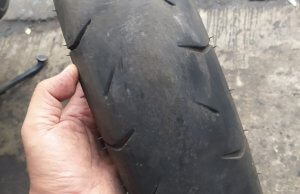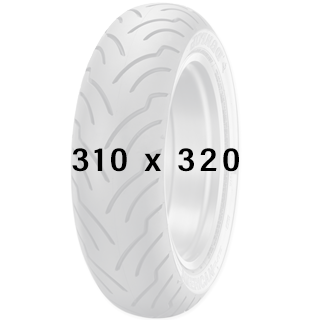How Old is My Motorcycle Tire? When Should I Replace It?
A motorcycle is only as reliable as its parts, including both tires. What’s more, you are putting yourself at risk of severe injury or death if you ride a motorcycle with old, outdated, or poorly maintained tires.
As tires age, they undergo oxidation, and this process damages their structural integrity. To prevent this damage from affecting your motorcycle, learn how to read tire markings and determine their age.
Once you know how old your motorcycle tire is, you can schedule its replacement at your local motorcycle dealer.
How Do Tires Deteriorate?

Over time, tires begin to deteriorate and lose their composition. Why? Rubber, the primary ingredient for tire manufacturing, oxidizes when exposed to the air.
Tires contain organic compounds called antiozonants to combat this oxidation. Despite this additive greatly improving longevity, exposure to air, heat, and the UV rays in sunlight break down the composition of the tires.
As this decomposition occurs, the tire begins to dry out and lose its flexibility.
The warmer the weather, the quicker oxidation occurs. Tires need to be stored in cool areas such as temperature-controlled warehouses. Inversely, extremely cold weather also harms some tires. This could cause cracking or tearing in softer compounds such as sport and race tires.
Long-term outside exposure to the elements can shorten the lifespan of a tire. What’s more, it can compromise its structural integrity.
Despite their basic appearance, motorcycle tires are complex pieces of technology. They include different material compounds and provide seemingly contradictory levels of stiffness, flexibility, grip, and longevity.
So buying tires from a manufacturer you can trust with an established reputation for producing cutting-edge tires is essential.
Identifying a Tire’s Age

When manufacturers produce a new batch of tires, the batch receives an identification number. This tire identification number reveals the week and year of its production. This is because all tires begin aging as soon as they leave the factory.
The industry standard for replacing motorcycle tires is six years after their initial manufacture date. However, if kept in temperature-controlled storage, this shelf life may be extended a little.
The National Highway Traffic Safety Administration (NHTSA) mandates that all tires include an identification number. It consists of the characters DOT, which stands for Department of Transportation, followed by 8-13 letters and numbers.
You can look up the tire’s manufacturer and when and where they were made with this information. See below for an example:
DOT CC9L XYZ1016

In this scenario, the last four digits, “1016,” reveal that the tire’s manufacture occurred in the tenth week of 2016. Therefore, the tire’s production date is March 7th-13th, 2016.
The other alphanumeric part of the ID number relates to the manufacturing plant’s location, the tire size, and its brand characteristics. When looking for this information, you may need to check both sides of the tire as the ID number need only be displayed on one side.
Checking the tire identification number to verify the manufacture year ensures that you know what you are buying. Even if the tread looks excellent, “new” tires may have been in storage for a considerable length of time before sale.
Remember, oxidation impacts the internal structure of the tire first. If stored in a hot warehouse or outdoors, the tire could have deteriorated due to its exposure to less-than-ideal conditions.
In this case, even though the tire is new, it may not be in the type of condition you would expect from a newly manufactured tire.
Replacing Old Tires
It is essential to replace old tires as they pose a significant safety hazard. Commons issues include:
- Tire blowouts while riding
- Increased risk of hydroplaning
- Ineffective braking capabilities
- Tread separation from tire carcass
When considering whether to replace your tires, knowing how old they are can help you schedule for their replacement.
Motorcycle tires generally wear out at different rates with the rear tire wearing out approximately twice as fast as the front.
Due to this uneven wear rate, you may need to replace the front or back tires at different intervals, despite their age. If this is the case, be aware that manufacturers intend tires for usage in pairs for optimum performance. So a replacement tire should match the make and model of the remaining tire.
Overall, there are two primary signals for replacing a tire; age and condition. And any tire that is more than six years old should be replaced regardless of wear.
Younger tires showing signs of oxidation such as cracking and fragmentation, or having reached their minimum tread depth, will also need changing. Ultimately, safety lies in your hands, so make yourself aware of your tire’s shelf life and regularly inspect them for wear.
Find a Motorcycle Tire Dealer
Looking to replace your worn or old motorcycle tires? Click here to find your nearest Dunlop motorcycle tire dealer.









